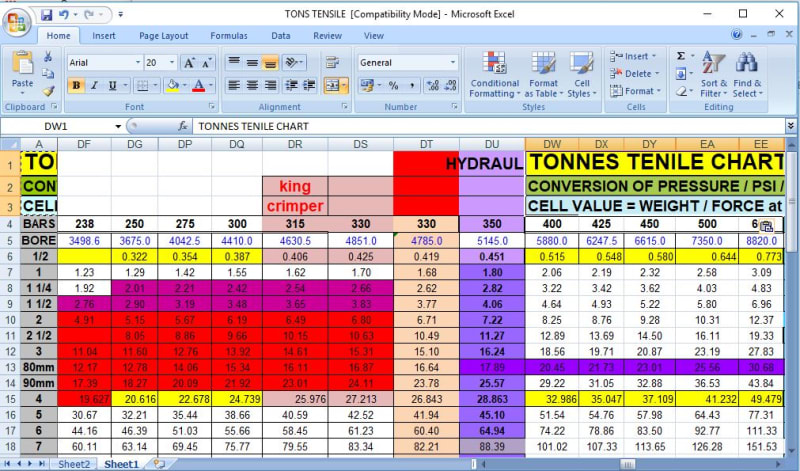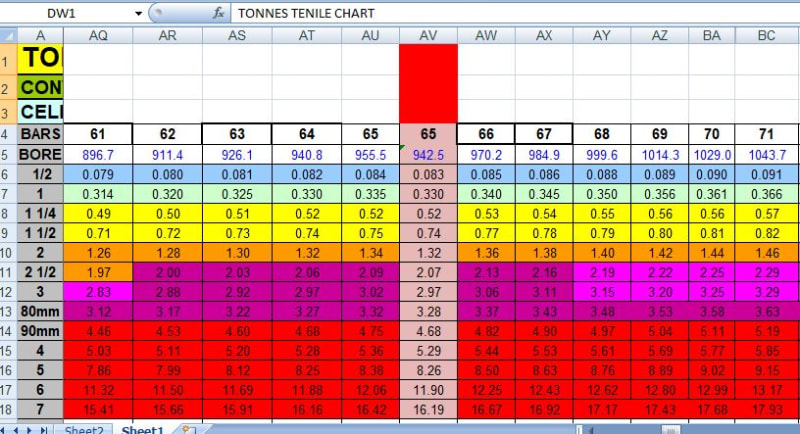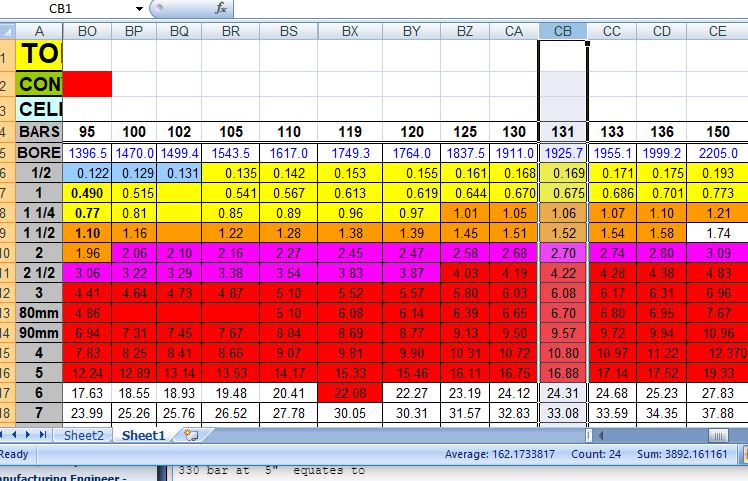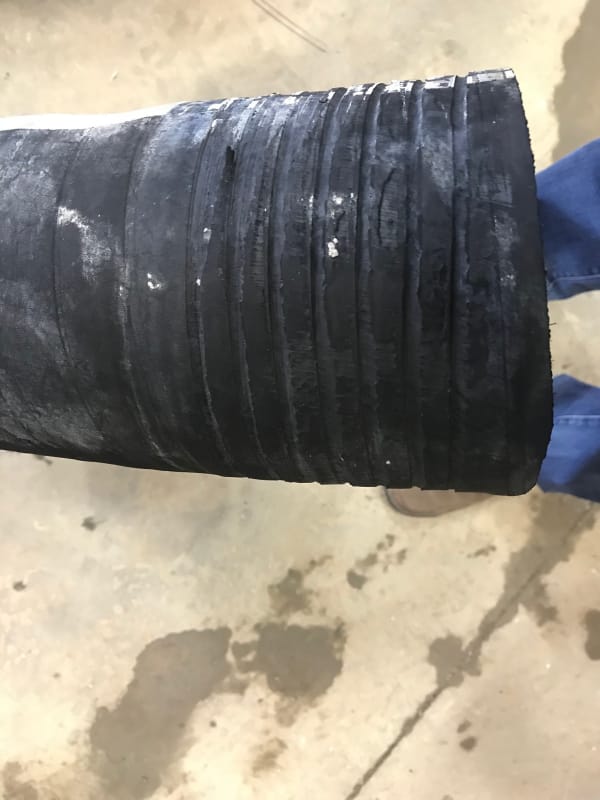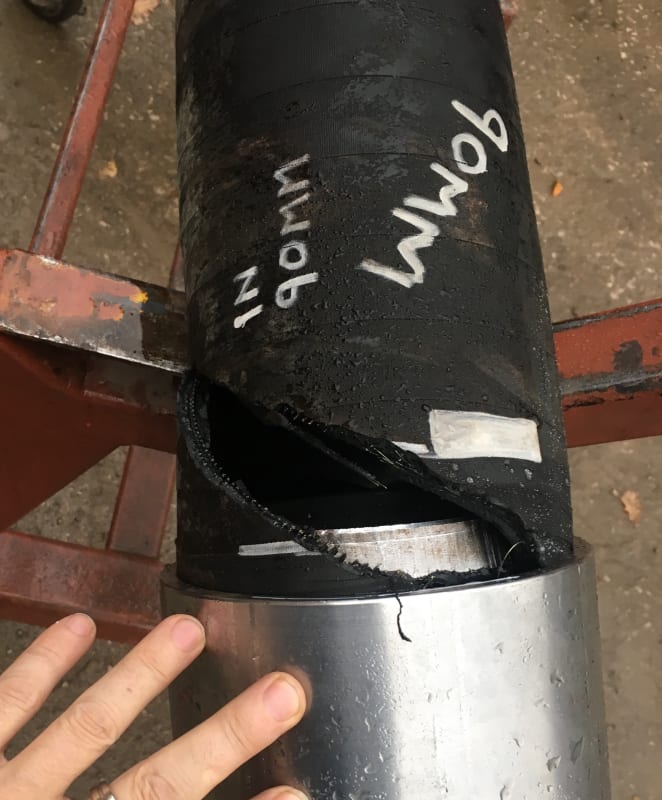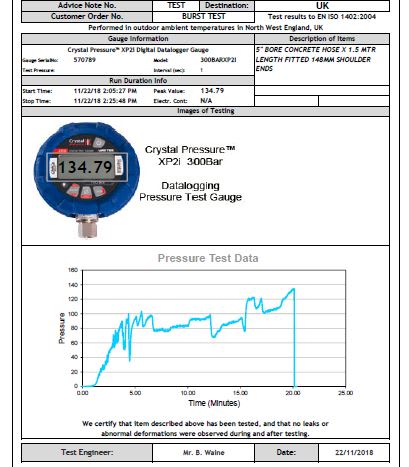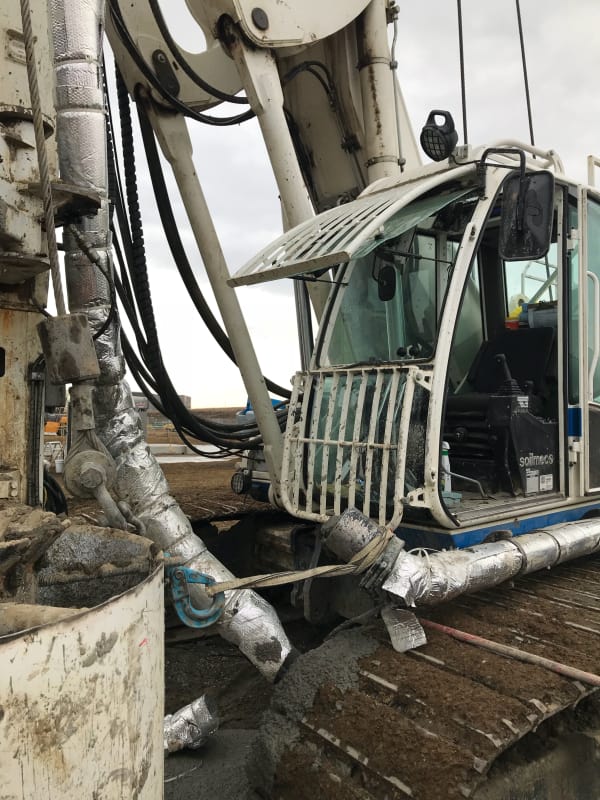HELLO, WE have supplied a large amount of 5" concrete pumping hose (MWP 100 bar - TBP 200 bar.
It has been fitted to a stationary concrete pump that pumps concrete over varying distances to a Piling rig up the mast and down a flight Auger (CFA Auger.
This is a VERY HIGH SAFETY issue.
Within 6 months they have had two ends disconnect from the hose. Be it called 'blown off' or 'forced off'.
I can post the user report, but names are mentioned and first I would like to confirm my suspicion.
I have already advised to withdraw all hoses and place them on a pressure test.
The hydraulic power cylinder is 80mm bore with relief valve pressure set at 330 bar. they are directly pushing a 7" diameter concrete piston (steel rod connection)stroke 55". there is a short steel reducing pipe to 5" bore, this is then the start of the flexible hose line can be 20-30 mtr to the rig then vertical up the mast 15 / 20 mtr.
The set up worked for 4 - 6 months (289 piles bored and filled) this is not a lot of work.
The first failure was directly at the pump (1st hose-1st end) this was replaced with a new hose. the 2nd hose failed the day after at the base of the mast directly in front of the driver. These failures are 'explosive' as air in the concrete is compressed.
They have contacted the pump supplier (brand new pump) large international supplier and they have stated it is impossible for the pump to exceed 65 bar concrete pumping pressure. So the failure is due to bad hose and or bad fittings.
These failures can KILL.
When a blockage happens (I am told there have been lots of blockages) from a independent site visitor. I believe the hydraulic pressure / force is delivered direct to the point of the blockage in the 5" line. I calculate this is 131 bar.
Prior to the relief valve being activated.
I am working on a 'frictionless' calculation as I do not wish to complicate the issue with 'slump' 'friction' 'temperature' calculations.
I have sent an email with my 'worries' to the pump manufacturer as I say they are misleading 'users' about safety and pressure. this is promoting an "invunrability" feeling to users. So far they have not replied to my email.
We have done thousands of these hoses and not had reports of failures. I am very confident our product is good and calculations correct, but we are up against a very large multinational company. I have stated this is not to apportion blame but to work together to gain safety.
I have done pressure and tensile tests to confirm calculations on video, but having a problem with getting my point across.
I am hoping for someone with greater knowledge on hydraulics (a third party) to confirm if I am correct or not.
thank you.
It has been fitted to a stationary concrete pump that pumps concrete over varying distances to a Piling rig up the mast and down a flight Auger (CFA Auger.
This is a VERY HIGH SAFETY issue.
Within 6 months they have had two ends disconnect from the hose. Be it called 'blown off' or 'forced off'.
I can post the user report, but names are mentioned and first I would like to confirm my suspicion.
I have already advised to withdraw all hoses and place them on a pressure test.
The hydraulic power cylinder is 80mm bore with relief valve pressure set at 330 bar. they are directly pushing a 7" diameter concrete piston (steel rod connection)stroke 55". there is a short steel reducing pipe to 5" bore, this is then the start of the flexible hose line can be 20-30 mtr to the rig then vertical up the mast 15 / 20 mtr.
The set up worked for 4 - 6 months (289 piles bored and filled) this is not a lot of work.
The first failure was directly at the pump (1st hose-1st end) this was replaced with a new hose. the 2nd hose failed the day after at the base of the mast directly in front of the driver. These failures are 'explosive' as air in the concrete is compressed.
They have contacted the pump supplier (brand new pump) large international supplier and they have stated it is impossible for the pump to exceed 65 bar concrete pumping pressure. So the failure is due to bad hose and or bad fittings.
These failures can KILL.
When a blockage happens (I am told there have been lots of blockages) from a independent site visitor. I believe the hydraulic pressure / force is delivered direct to the point of the blockage in the 5" line. I calculate this is 131 bar.
Prior to the relief valve being activated.
I am working on a 'frictionless' calculation as I do not wish to complicate the issue with 'slump' 'friction' 'temperature' calculations.
I have sent an email with my 'worries' to the pump manufacturer as I say they are misleading 'users' about safety and pressure. this is promoting an "invunrability" feeling to users. So far they have not replied to my email.
We have done thousands of these hoses and not had reports of failures. I am very confident our product is good and calculations correct, but we are up against a very large multinational company. I have stated this is not to apportion blame but to work together to gain safety.
I have done pressure and tensile tests to confirm calculations on video, but having a problem with getting my point across.
I am hoping for someone with greater knowledge on hydraulics (a third party) to confirm if I am correct or not.
thank you.

